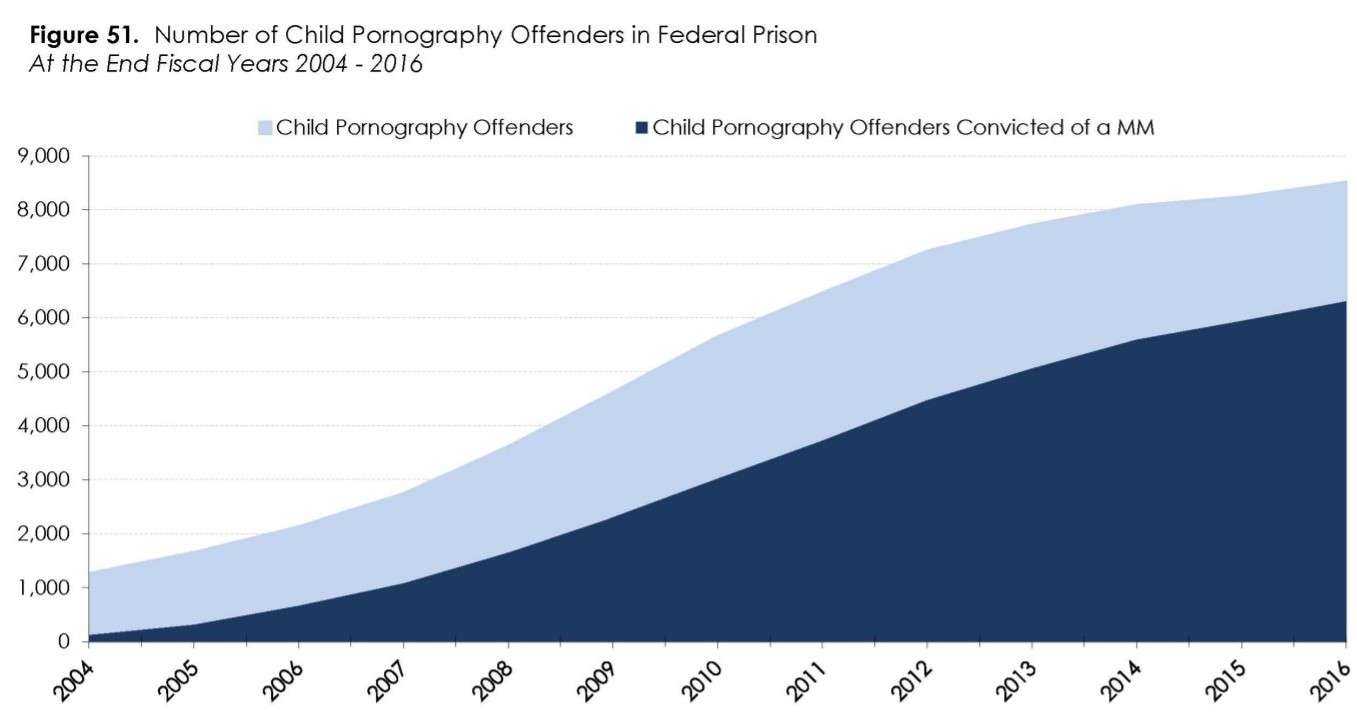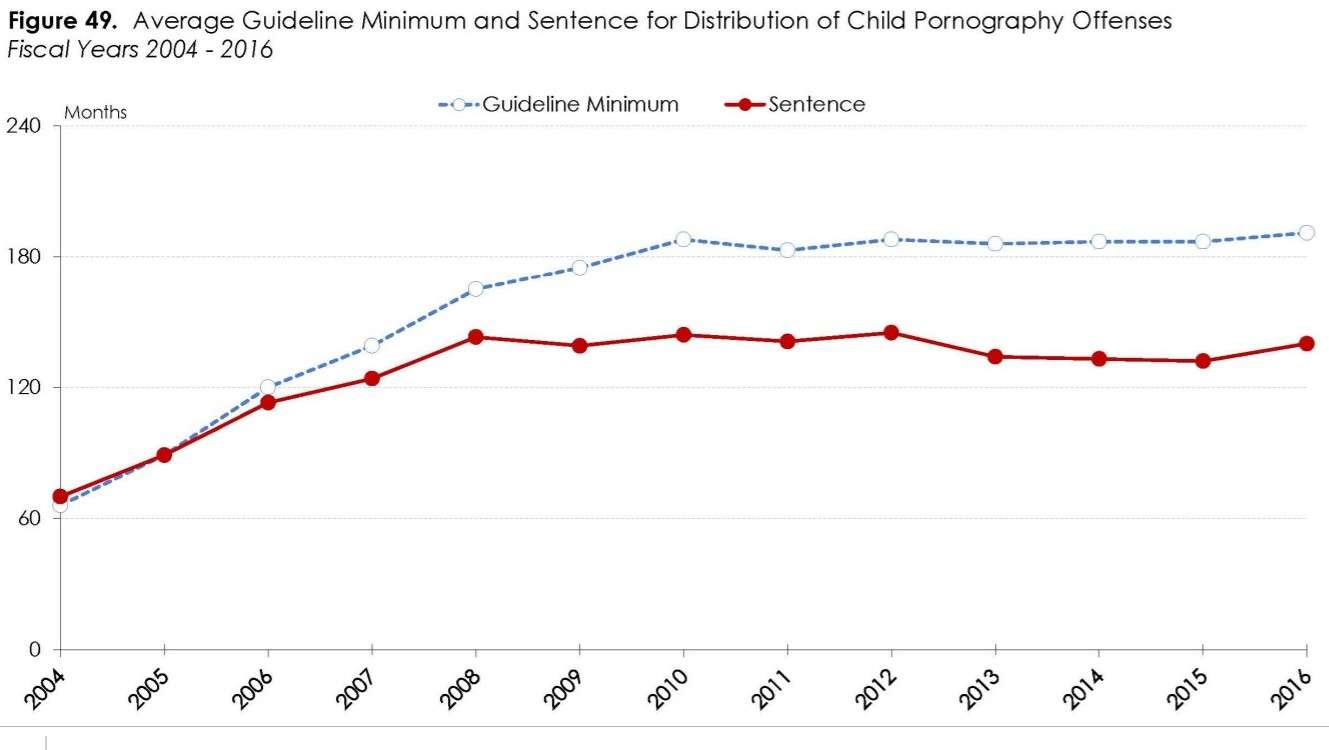The Number of Men in Federal Prison for Viewing or Sharing Child Pornography Has Nearly Septupled Since 2004
Most are serving mandatory minimums, usually for crimes that did not involve assault or sexual abuse.
The number of child pornography offenders in federal prison has nearly septupled since 2004, and most are serving mandatory sentences of five years or more, generally for crimes that did not involve assault or sexual abuse. In fiscal year 2016, for example, 1,565 people were sentenced for possessing, receiving, or distributing child pornography, but only 80 (5 percent) were also convicted of production or another form of sexual abuse. The average sentence was more than eight years.

Those numbers come from a report published today by the U.S. Sentencing Commission (USSC), which says 8,508 federal prisoners were serving time for child pornography offenses in FY 2016, up from 1,259 in FY 2004. The report shows that federal courts continue to impose lengthy prison sentences on people whose offenses may have consisted of nothing more than looking at or sharing pictures of other people's crimes. Judges often have no choice, since Congress has established a five-year mandatory minimum for receiving or distributing child pornography, which rises to 15 years for defendants who have previously been convicted of specified sexual offenses. In FY 2016, 58 percent of child pornography offenders received mandatory minimums.
When judges have discretion, they typically use it to impose sentences shorter than those recommended by federal guidelines. "In fiscal year 2016," the USSC reports, "only 26.8 percent of all child pornography offenders were sentenced within the guideline range, compared to 46.6 percent of offenders overall and 41.4 percent of offenders convicted of an offense carrying any mandatory minimum penalty." That pattern, which is consistent with data for the last decade or so, indicates that federal judges view the current sentencing scheme as excessively harsh, a complaint some of them have publicly voiced. A 2010 USSC survey found that that 71 percent of federal judges thought the mandatory minimums for child porngraphy offenses were too long, while 70 percent said the same thing about guideline sentences.

Some aspects of these sentences defy rationale explanation. "Although Commission analysis has demonstrated that there is little meaningful distinction between the conduct involved in receipt and possession offenses," the USSC notes, "the average sentence for offenders convicted of a receipt offense, which carries a five-year mandatory minimum penalty, is substantially longer than the average sentence for offenders convicted of a possession offense, which carries no mandatory minimum penalty." In FY 2016, the average sentence for people convicted of receiving child pornography (excluding those convicted of prior sex offenses) was 85 months, more than 50 percent longer than the 55-month average for people convicted of possessing child pornography. The difference lies not in what the defendant did but in how a prosecutor decides to charge him.
That is by no means the only weird result dictated by current sentencing rules. In a 2009 critique of the sentencing guidelines, Troy Stabenow, then an assistant federal public defender in Missouri, showed how a defendant with no prior criminal record and no history of abusing children would qualify for a sentence of 15 to 20 years based on a small collection of child pornography and one photo swap, while a 50-year-old man who encountered a 13-year-old girl online and lured her into a sexual relationship would get no more than four years. The comparison, Stabenow said, "demonstrates the absurdity of the system."
In FY 2016, the average sentence received by federal child pornography offenders, 95 percent of whom were not convicted of contact crimes, was 101 months, which is nearly as long as the average for robbery. The maximum sentence for receiving child pornography, 20 years, is almost as long as the maximum sentence for arson. Violations of 18 USC 1466A, which covers "obscene visual representations of the sexual abuse of children," are subject to the same penalties, even when production of the images did not involve any actual children. That's right: If one person hands another a drawing of children engaged in sexual activity, both can get five to 20 years.
The federal government is restrained compared to some states. Arizona and Florida, for example, have been know to impose life sentences on people caught with child pornography. Something has gone terribly wrong when courts treat looking at images of a crime more severely than committing that crime.


Show Comments (40)